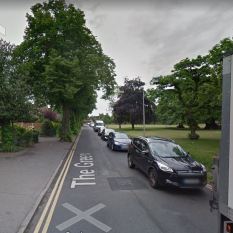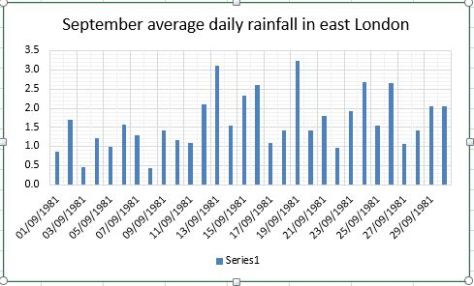While putting together my September extremes blog I noticed that the month was marked by some big rainfall episodes. On a national scale TORRO statistics show that a south-east climate station holds the daily record for September – unusual in that every other month is dominated by stations in the north and west of Britain.
Further analysis of local data since 1959 shows how September has slowly evolved from being dominated by autumnal to summery weather. The wettest period, from the mid Sixties to the mid Seventies, saw 42 per cent of highest daily rainfall events recorded.
Two of these events, in 1968 and 1973, are well noted and appear in RMET’s Weather magazine.
1968
In Wanstead, between 14th and 15th September, a total of 58.4mm fell, a large total though far less than elsewhere.

Noon Sept 15th 1968

Noon Sept 16th 1968
The rain became torrential overnight in southeast England and continued through most of the 15th. Rainfall totals ranged from three inches in the London area and nearly four inches in southern Essex to approach the quite abnormal level of nearly seven and a half inches in parts of Kent during the 14th/15th.
The area of greatest precipitation was near the Kent, Surrey and Sussex border where violent downpours in the 12 to 15 hour period from midnight on Saturday to the early afternoon of Sunday 15th led to widespread and disastrous flooding. The heavier rain area moved north and east during the night of 15th/16th and Gorleston recorded.
The highest accepted two-day falls were 201mm at two rain gauges at Tilbury
and Stifford in Essex, and a similar fall north of Petworth in Sussex. The highest ‘rainday’
totals (i.e. nominally 0900–0900 GMT) listed in British Rainfall 1968 were 129 mm at
Bromley and 125 mm at South Godstone sewage works in Kent, both on 15
September.
This exceptional event was described by Bleasdale (1974), Salter and
Richards (1974) and Jackson (1977) and the map below (Fig. 1) is taken from Bleasdale’s
paper in British Rainfall 1968 (p. 231). In all, some 575 km2 received more than 150 mm
in 48 hours.

1973
In Wanstead, on 20th, a total of 55.4mm fell, the largest daily total recorded in September. Again it was far less than elsewhere.

There were notable falls of rain in London, Surrey, West and East Sussex, and particularly Kent. At Manston, near Margate, 172 mm fell in 18 hours 40 minutes commencing 1710 GMT; at nearby West Stourmouth 190.7 mm fell in the rainfall day i.e. the 24 hours commencing 0900 GMT on 20 September (source: Met Office internal list of heavy falls of rainfall in short periods in the United Kingdom during the year 1973; Rainfall/heavy falls section listing, available in manuscript/computer printout form in Met Office archives).
The future
Big September rainfall events seem to be becoming rarer in our part of the UK, the last was in 2014, on the day of the Scottish referendum, though this was convective rather than frontal rainfall.
The outlook for the rest of this month suggests yet another absence of a large rainfall event. The ingredients for large rainfall totals in the south-east – blocking high to the north with slow moving low pressure over Brittany – look unlikely to form during the remainder of the month. We probably will see rain but any fronts are likely to move through quickly, with typical totals being around 5mm.















 saying this there also needs to be more joined up thinking by councils in terms of looking after the existing tree stock. Far too many trees suffer because contractors are inconsistent with road and pavement repairs. Ideally the base of trees should have space for mulch to be applied but, too often, Tarmac is applied right up to the base.
saying this there also needs to be more joined up thinking by councils in terms of looking after the existing tree stock. Far too many trees suffer because contractors are inconsistent with road and pavement repairs. Ideally the base of trees should have space for mulch to be applied but, too often, Tarmac is applied right up to the base.



































You must be logged in to post a comment.